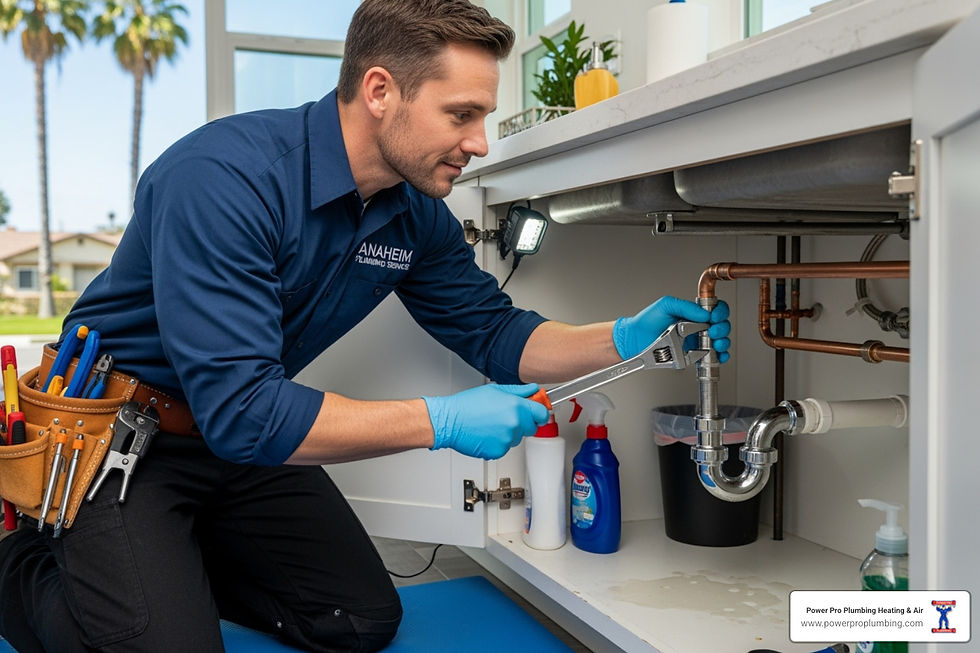Inverter For Home: 5 Safety Tips Every Homeowner Should Follow
- Vanshika Thareja

- Nov 18
- 4 min read

Even though talking about how we used to share ghost stories under candlelight during power cuts gives a serene, nostalgic feel, it is not always the same case. Power cuts also mean a full stop to many day-to-day activities. And with the uncertainty of power cuts, backup systems become important. Inverters are like the backbone of backup systems. Obviously, you consider your power requirements and frequency of power cuts when selecting an inverter. How well and safe the inverter performs can also depend on how you use it.
Modern inverters do come with advanced features to ensure performance and safety. Yet, you must follow certain habits and practices for safety. Here are tips to follow when using an inverter for home.
1. Do Not Overload the Inverter
The inverter for home you choose has a specific capacity (watts) and therefore, can power a specific number and type of appliances. The ideal approach is to first compute your power requirements and select an inverter that can deliver the same. In fact, it is often suggested to go for a slightly higher capacity to meet additional requirements, just in case there are any. That is because overloading an inverter is on the not-to-do list.
Overloading an inverter for home can damage the system and also the appliances and devices connected to it. Suppose you have a 1000W inverter, which is mainly designed for small appliances, like lights, fans, blenders, and such. If you attempt to connect a big appliance, like a refrigerator, to the inverter, it will overload the system and can cause an instant shutdown.
2. Do Not Ignore Battery Health
The inverter runs on the battery. First of all, choosing the right battery for the inverter is crucial. There are Short Tabular, Tall Tabular, and Flat Plate batteries that offer consistent, long-lasting performance. Take your time, evaluate the features, and then take your pick. Secondly, ensuring the proper health of the battery is a must to ensure the inverter does its job efficiently. What does that entail?
● Insufficient electrolyte or water levels can dry up the plates and reduce backup capacity. Make sure to check and top up electrolyte/water regularly to maintain battery health.
● Allowing dirt and acid fumes to cause corrosion can restrict current flow, drop voltage, or even cause sudden failures. Clean the terminals periodically to prevent buildup.
● Leaving the battery deeply discharged for a long time weakens it over time due to sulfation. Recharge it promptly after deep use to extend its lifespan and efficiency.
● If the battery seems to be discharging faster than usual, it might be time to replace it. Faulty batteries can affect the inverter’s performance, shut down the system, and even damage the connected appliance.
● Combining new and old batteries leads to uneven charging and shorter life. Use batteries of the same age and capacity for balanced performance.
3. Be Careful with Installation and Wiring
You choose the best inverter for your home after calculating your power requirements and considering all the tips and suggestions. You get it installed, but it isn’t performing the way you expected. Improper installation or wiring can be the cause.
What problems can occur? There can be power drops. Wires can get overheated and create a risk of fire. There is also a chance of short circuits, and you can guess the consequences of that.
So, what do you do? Start by checking the installation and wiring guidelines provided by the manufacturer and stick to them. Use inline fuses or circuit breakers near the battery. Also, make sure all the lines and connections are clean, well-connected, and corrosion-free.
4. Ensure Proper Positioning and Ventilation
Aesthetics can’t be the only deciding factor of where or how you should place the inverter. It’s a power solution, and that means it produces a great deal of heat when it’s running. That also means it needs adequate ventilation space. You cannot place the inverter in compact places with limited airflow, as it will start getting overheated, the internal components and thermal can shut down, and its lifespan can be shortened. You also cannot place them in damp places, as the moisture can damage them.
The best practices are:
● Place the inverter for home in a dry, well-ventilated space.
● Make sure there is no flammable material nearby.
● Keep a 4 to 6 inch clearance space on all sides of the inverter.
5. Do Not Neglect Maintenance and Safety Checks
You will find many low-maintenance inverters for your home, but that doesn’t mean completely forgetting about them. Regular maintenance and safety checks can really make a difference.
● Check for any dust buildup, any sign of rust, or loose wiring.
● Monitor performance to identify if there has been any drop in performance efficiency.
● Follow servicing recommendations from the manufacturer.
Wrapping Up!
Mindful use of the inverter is as important as choosing the b install the inverter. Monitor the performance, and if there is any change, it is best to check and see if there is any issue with any wiring, the battery, or such. Following the best practices will help with maintaining the expected performance as well as a long lifespan.



Comments